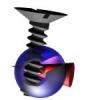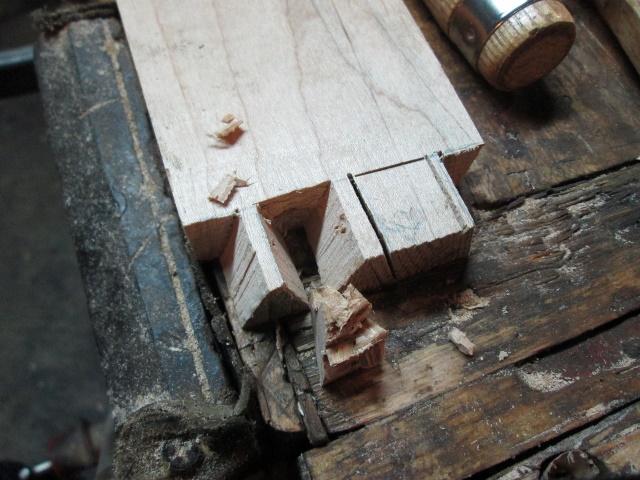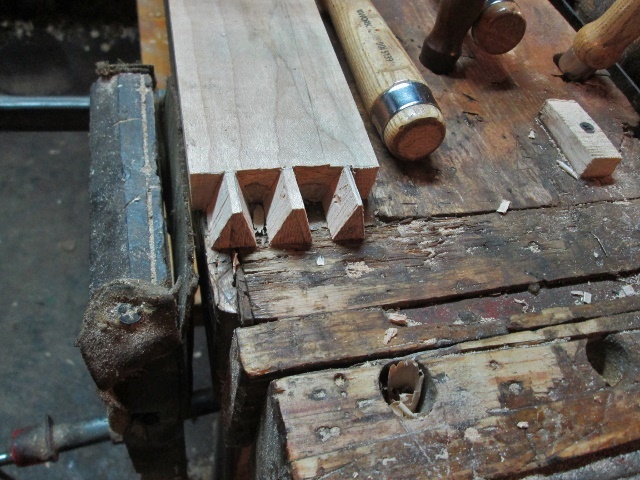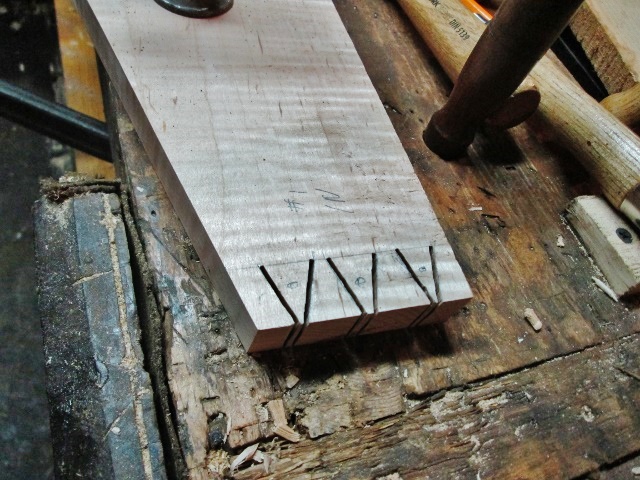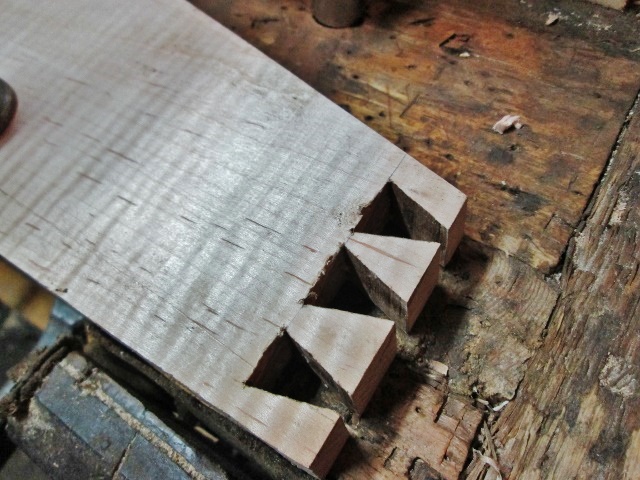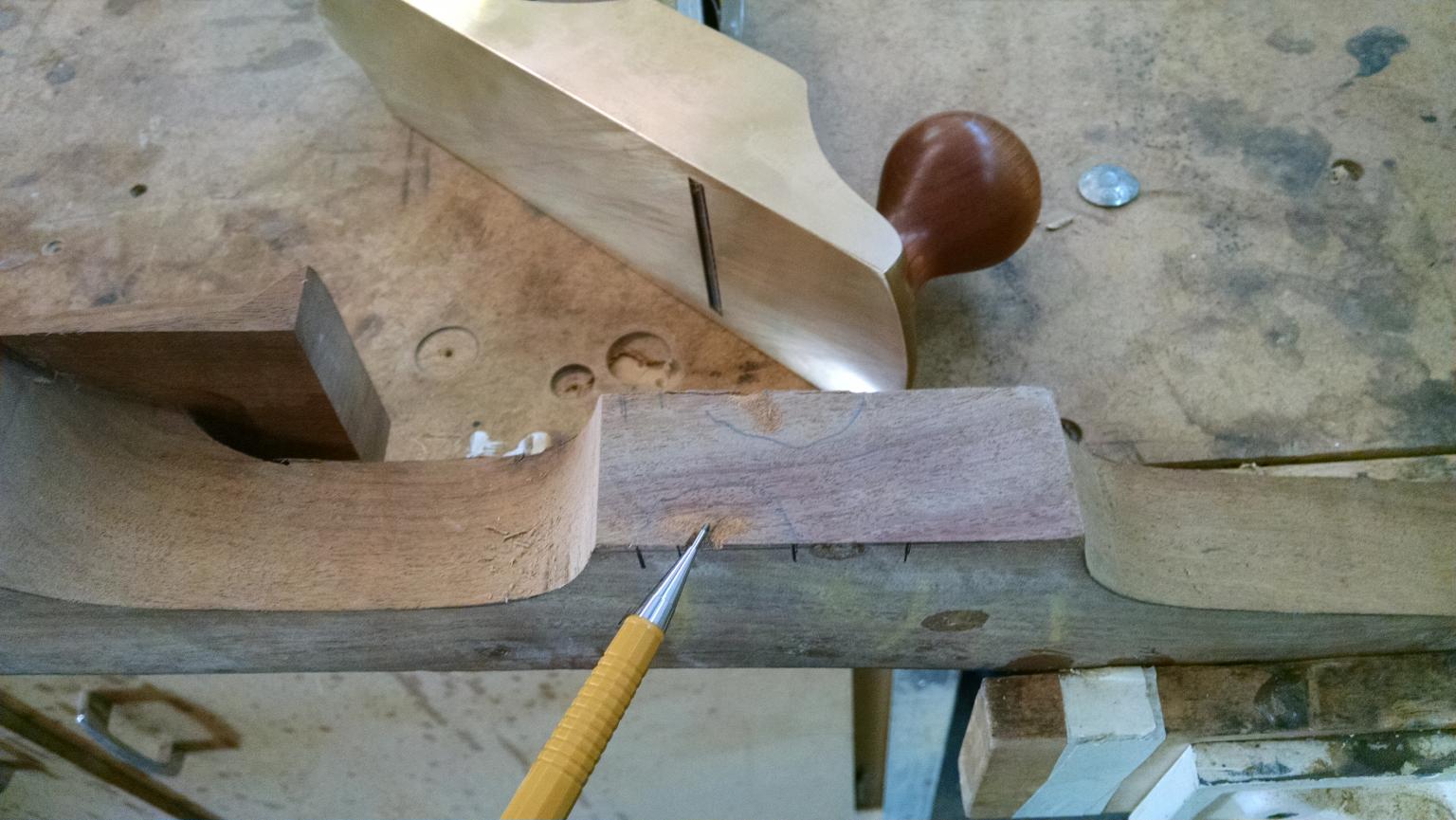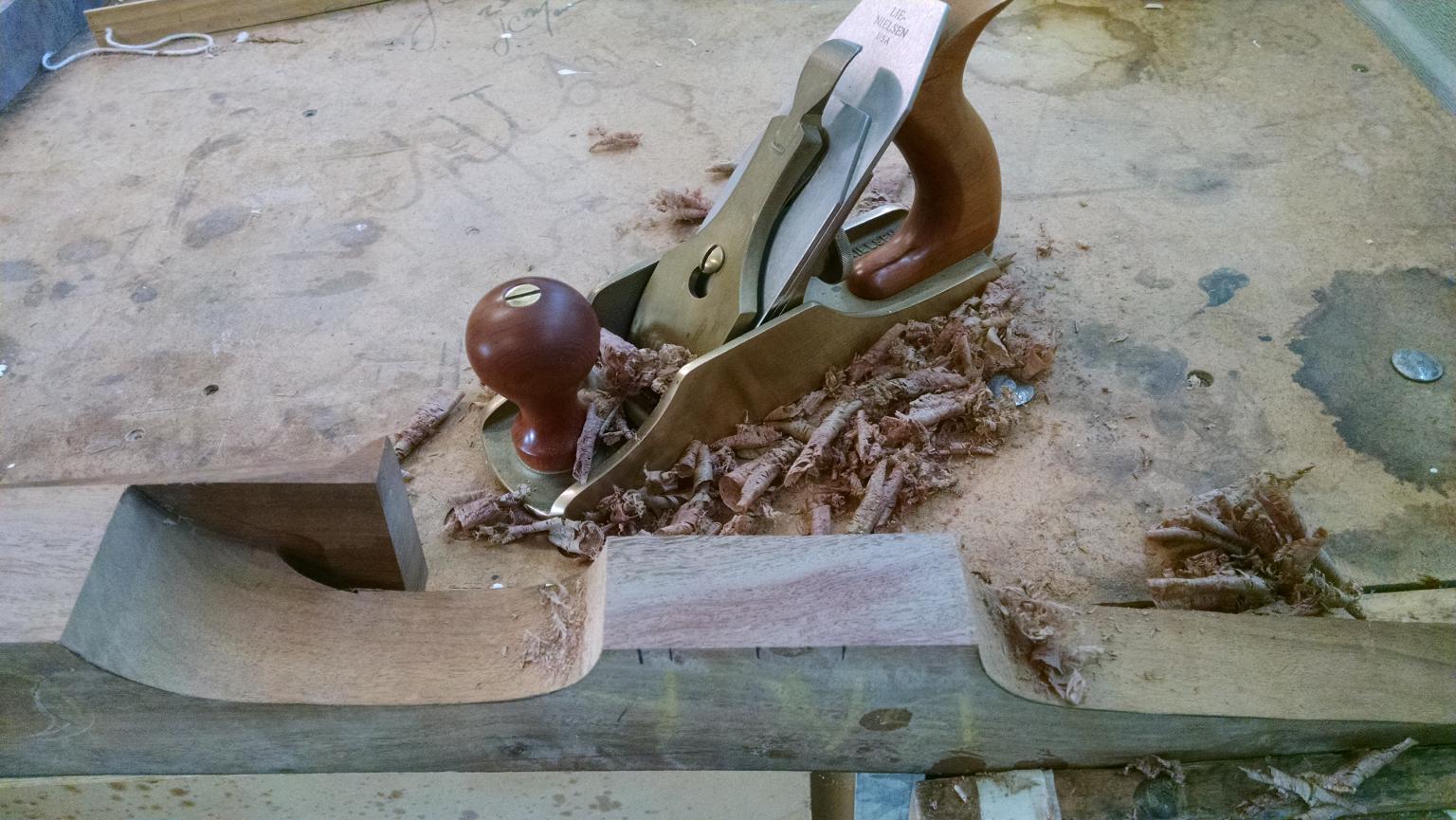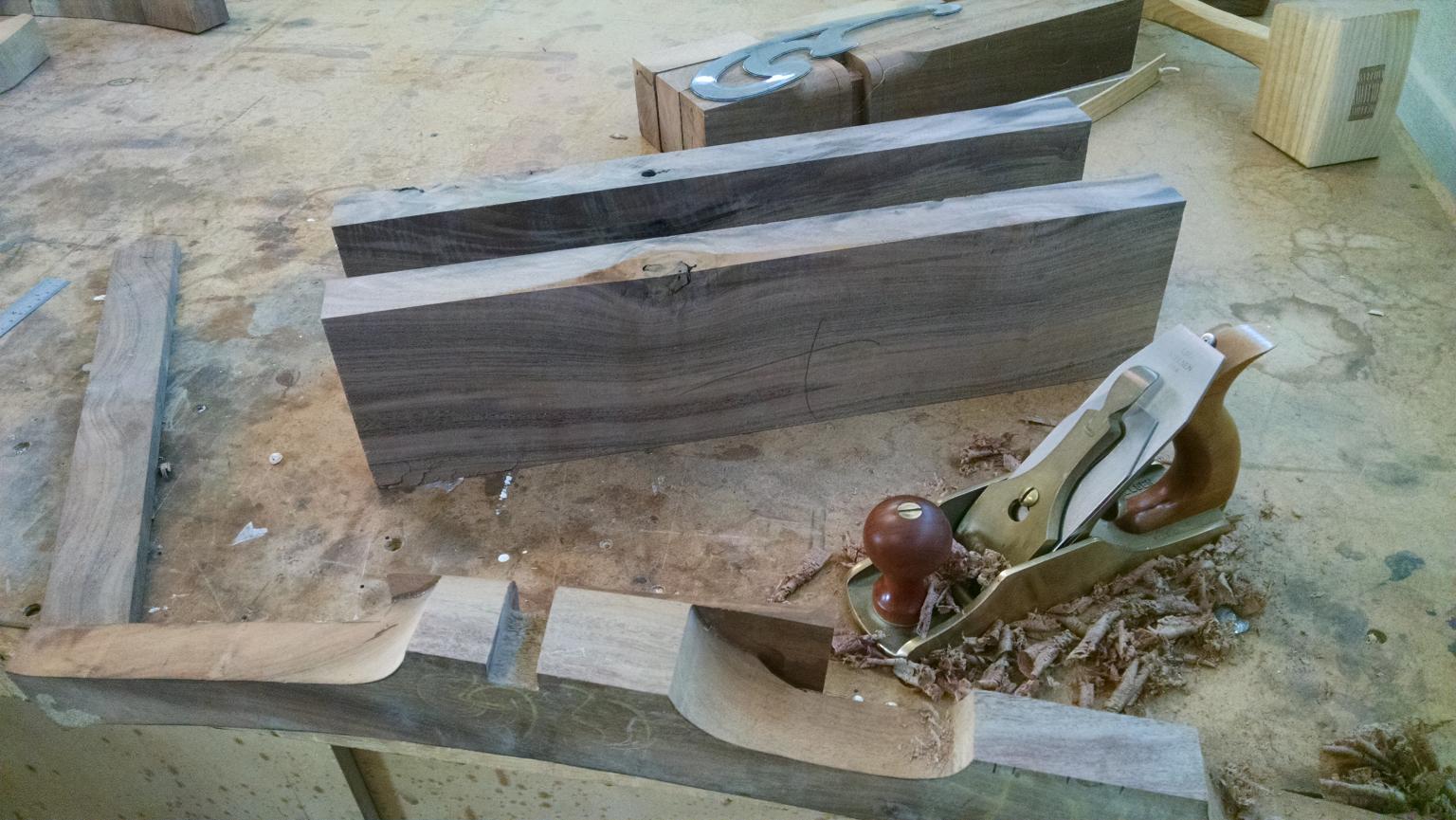Search the Community
Showing results for tags 'joint'.
-
Ever since reading R. Bruce Hoadley's article (44 years ago), I have not been a fan of dowel joints. In addition, there is no room for error when doing multiple joints in a piece. They need to be spot on. Compare that with biscuits or mortise and tenon where the mortise is a bit longer than the tenon. And after getting into the furniture repair business, I have re-glued dozens of chairs with dowel joints. Once I get the corner blocks unscrewed, they almost always just pull apart by hand. Last Tuesday, I was taking a bunch of dorm desks donated to the furniture bank and converting them to a mini-dresser / nightstand by disassembling and sawing off the kneehole section, leaving a stack of 3 drawers in a cabinet. The ones I worked on then had a stretcher along the back about 10" off the floor. All the other stretchers and drawer supports had dowel joints and came right off. But that stretcher would not budge. So I started to saw off the joint and hit metal. Turns out there was one screw on the outside panel that had a wood plug to conceal it and another from the inside of the cabinet. Result: The one screw was holding much better than all the other loose joints with two dowels glued in. I got a BeadLock jig that I have sometimes used as a dowel jig, but very rarely. I have a few hundred 3/8" dowel pins that I bought to replace non-functional dowels on chair reglues. They will be in my estate sale. I see people doing "tests" of strengths of dowel joints. In my opinion they are flawed for two reasons: they only test one type of stress. There is compression, tension, racking, and shear stress. They test one, usually racking. Two, they are done shortly after assembly and not after several seasons of humidity change (ref: Hoadley) and not accumulated stress. i guess the best thing you can say about dowel joints is they have slow failure and not fast failure. If you are sitting on a chair with dowel joints, it will get loose gradually and not just dump you on the floor unannounced. https://www.finewoodworking.com/project-guides/joinery/the-dowel-joint
-
This is the second post on (incorrectly built, IMO) box joints. Using box joints on short grain might work (short term) but is risky putting any force on clamping them tight or stressing once built. And if you are off 0.002" on your jig, by the time you get to the end of the piece, you'd be off 0.080" or over 1/16", making a tight fit. Short grain does not have much strength, or as Roy Underhill says, "Planes of strength and planes of weakness." https://www.pbs.org/video/woodwrights-shop-spirit-woodcraft/
-
In the below picture are component I and N when glued to D are in a cross grain connection. They mate with H in a long grain connection. how much glue and only in the center board of D? Also end grain connection to J and E? Yes this same connnection happens on the other end. I think that is why there are lag screws connecting H to D and E. Should I be concerned?
-
Got one of a set of nesting tables from a friend that had a leg broken off. Process of repair: Take off one end of legs with the damage Work apart the joint on the other end since the dowel pins were at right angles Find broken off pieces and glue and clamped them back on Removed broken off dowel pin. Cleaned out holes Filled remaining missing piece with stick epoxy, let cure a few minutes then chisel and sand down to flush Glued in new dowel pin and reglued the rest Lighty sand top Apply a bit of touch up marker where needed Apply a couple coats of shellac, then a coat of lacquer Before Putty with overfill Putty after sanding Glue up Back together
-
Doing some Googling and found an old post, it looks like one I wrote, and in 2015 "Stick" copy and pasted into another forum. It was part of a study I did on various joint strengths. Repeating here because I cannot find the original ------------------------------------- All the data I see on dowel joints test against "young" joints, not one that's been through several seasonal variances in humidity. I thought R. Bruce Hoadley put this one to bed 40 years ago in Fine Woodworking... As he says, "If good dowel joints aren’t the oldest joints ever made, loose ones must be." Preview - The Dowel Joint - Fine Woodworking Article tests run on "fresh" joints. And the tests are "racking" stress only. And I am skeptical of anyone who says, "500 pounds of pressure" Force is measured in pounds, pressure in pounds per square inch, and torque in foot-pounds (or the metric counterparts). "For every complex problem there is an answer that is clear, simple, and wrong." (H.L. Mencken) Joint strength is a complex problem.... There are variables in the material Variations in wood species, moisture, density, propensity to split, wood movement indices, etc. etc. Lumber vs. engineered wood Variations in wood axes - Anisotropic – Orthotropic properties of radial, tangential, and axial planes (Hooke's Law) Fit / gaps (is a "weaker joint" that fits well better than a "stronger joint" that is ill-fitting?) Surrounding wood failure (even if the "joint" A is 10 times as strong as another type of joint B, if the wood fails first on both, it's a moot point) Depth of penetration of joint from one component to another Another of the complexities are the types of stress. I identified 6 kinds o stress on a joint -- shear compression tension racking cleavage peel. Did you ever see a dovetail on a chair leg or a half-lap on a drawer? There are also different ways the wood is joined side-grain to side-grain (at 0 or 90, or some other angle) end-grain to end-grain end-grain to side-grain end-grain to face-grain Joints also have multiple attributes Speed to make Appearance Cost, especially if new tooling or special per-unit materials involved Strength And there are multiple stress-failure considerations Soft fail (gradual loosening) vs. hard fail (fails with a crash) flexibility vs rigidity Repairable vs. non-repairable (the "shear pin" factor) moisture fluctuations over time, differential contraction's effects on the joint Dynamic (sudden) vs. static (continuous) stress Most every test is done on a "fresh joint" not one that's gone through multiple wet-dry seasonal cycles. (one of the dowel jig vendors that claims they're the strongest joint specifies materials & their dimensions, type of test, and other considerations to tip the scale. Unless you have end-grain to end-grain (a very uncommon joint in practice), the wood will be moving in different directions and tend to break the glue joint in at least one side of the joint You have minimal glue surface (on a round dowel) and most of that will be end-grain to side grain You have limited penetration distance if you are using dowel pins (usually max at 3/4 to 1" each side) And the big question is, "Is it strong enough?" You have different strength requirements for a chair and a picture frame.
-
I'm rebuilding a chair. The joints are M/T, with tenon bolts (inserted in parallel with the tenon) secured to a threaded insert. To the right of the end of the board, you can see a hole into which a pin has been driven. The threaded bolt (1/4-20) cinches up about 1/4" short of the pin. The pin does not act as a stop for the bolt, nor does the pin pass through the M/T joint as a dowel might. What is the reason for the pin?
-
From the album: Walnut Rocking Chair
The joints in these chair is known as the "money shot". They are really pleasing to the eye, but in the manufacturing process of the leg to seat joints, the process can go from great to disaster in milliseconds, and the project could be ruined. I am happy when the seat joint operations are completed! In this image, the first coat of finish is not applied yet, the sheen you see is purely from sanding through the grits, up to a 1000 abralon pad.- 6 comments
-
- black walnut
- joint
-
(and 3 more)
Tagged with:
-
stumbled across this DIY jig It looked interesting
- 4 replies
-
- joint
- fnger joint jig
-
(and 2 more)
Tagged with:
-
I'll be building a few cabinets and drawers shortly for the shop. I prefer to use hardwood (either poplar or maple) for drawers normally, but I think to save time and get things done a little more quickly I'll use 1/2" plywood (maybe BB, maybe not...haven't decided). But here's my question: when I use hardwood my joints are either DT (for household furniture) or drawer lock joints (for cabinets). But what do you use for plywood? I can't imagine either of my other ones working all the well; and for the record I have tried to cut DT joints in BB and wasn't all that enamored with the results. Besides, I dn't want to spend the time...I want something fast. What about just using wood screws to hold the sides to the drawers front. These will be drawers boxes that have a false front.
-
Rather than bury this in the Desk thread....corner work for the desk means dovetails.. I jointed the edges. Nice to have a square end to work from.. Laid out the pins first ( Easy to mark out the tails later) then a bit of saw work... This is now my "Go-to" saw for joinery...my other good saw stayed down at Charles Neil's place... Have to remember which is removed, and which isn't. Cut the edge ones off, which left this.. This is how I chop out the waste...I leave a tab out on the end, because... It supports the waste until it pops out. Got all this done.. NOW I can use this to lay out the tails.. Not sure about anyone else, but I am terrible at angled cuts....cheated and used the bandsaw. I stayed on the waste side of the lines, trying to leave the lines.. Then back to chopping.. Same as before. Then flip over and chop some more, until the waste pops out.. Maybe a little clean up? Dry fit to see ... Close enough for the girls I run with? One corner done, three to go... And that is how I do dovetails....
-
Working on the rear legs of this rocker. I am planing the faces true and flat for the seamless leg to arm joints. This face must be dead on flat and smooth in order for the arm to mate up properly. The imperfections must be planned away. Got it. Arm blanks in the back. It doesn't look like much yet. But it will be!
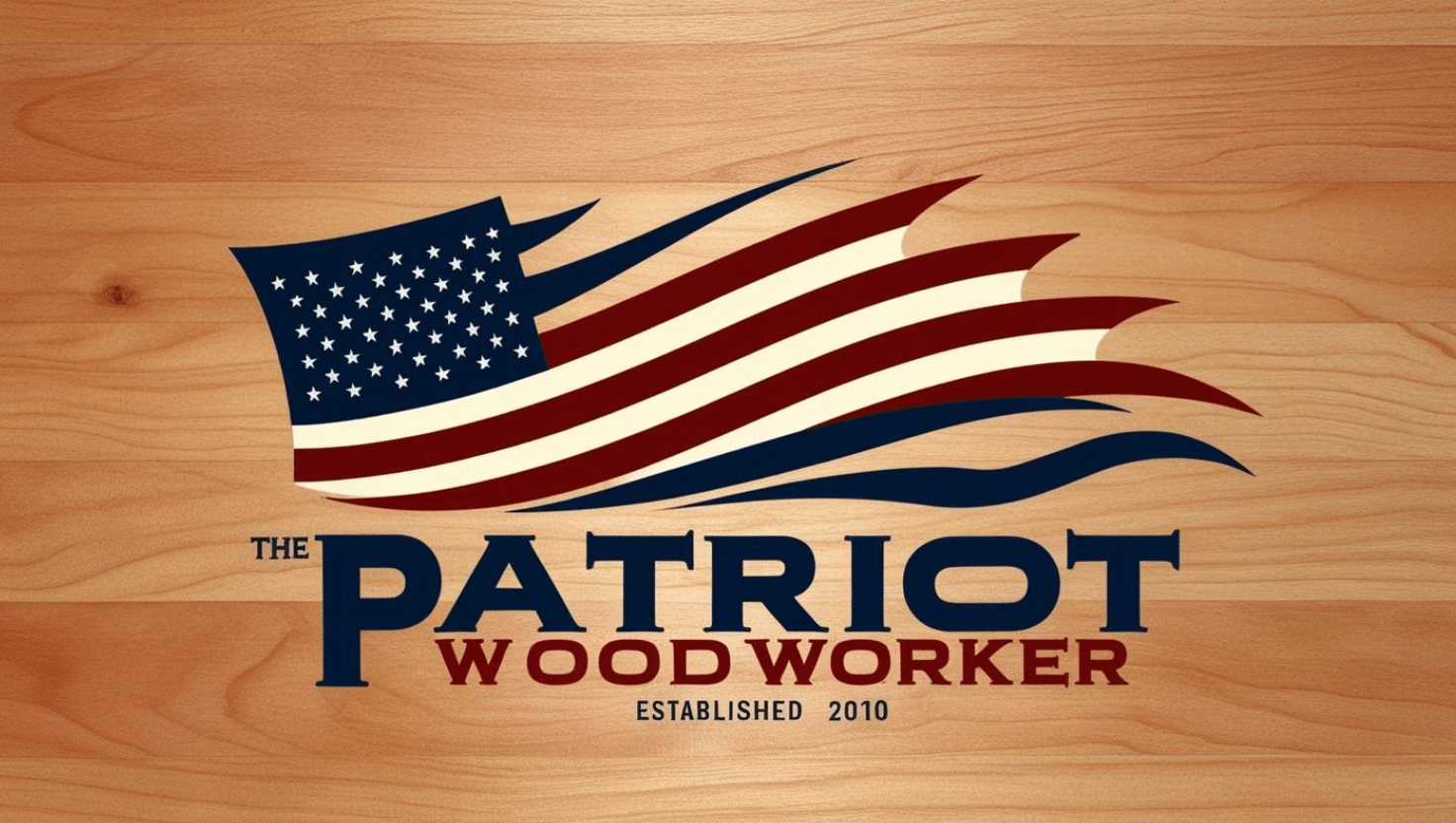






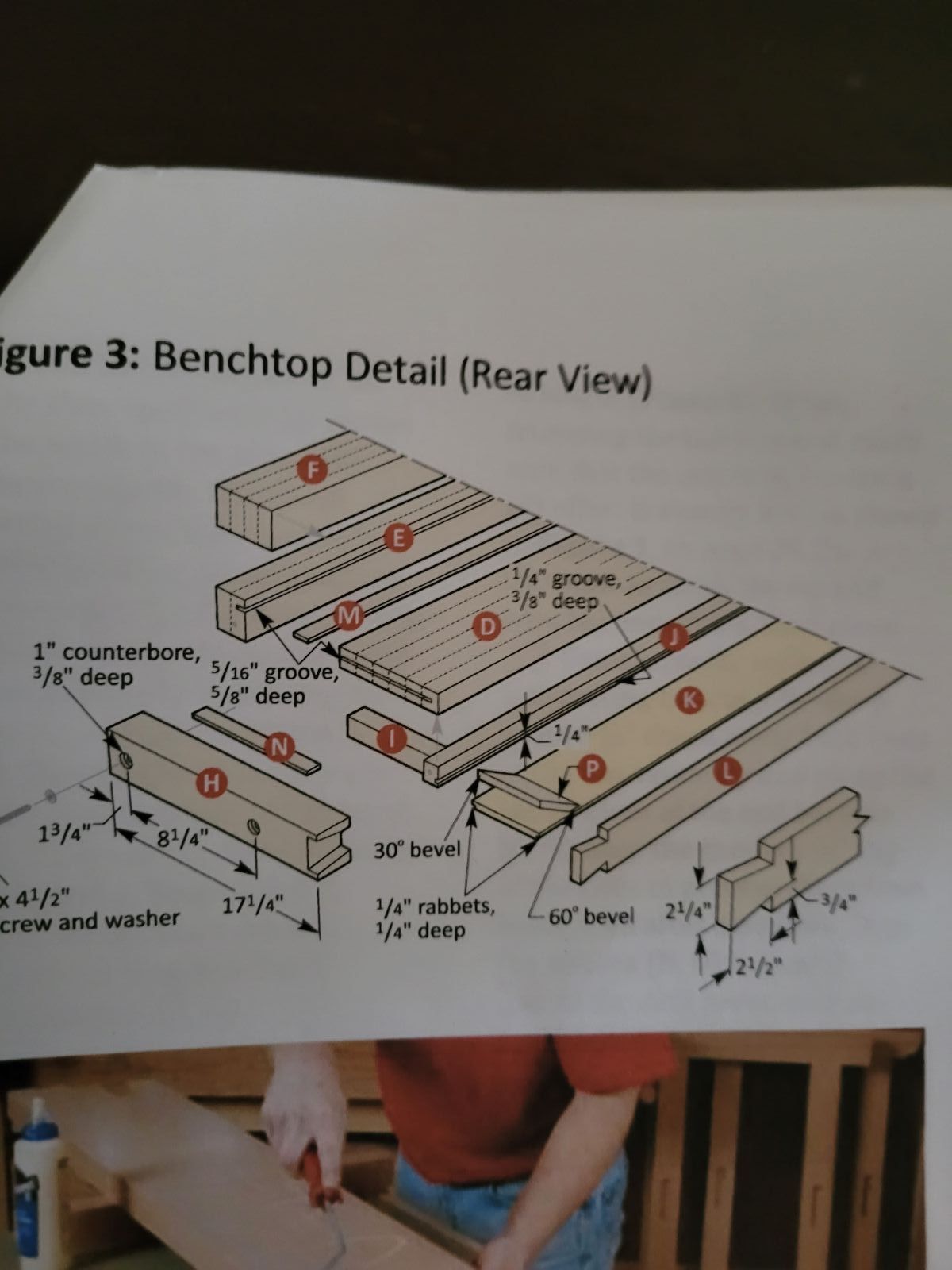




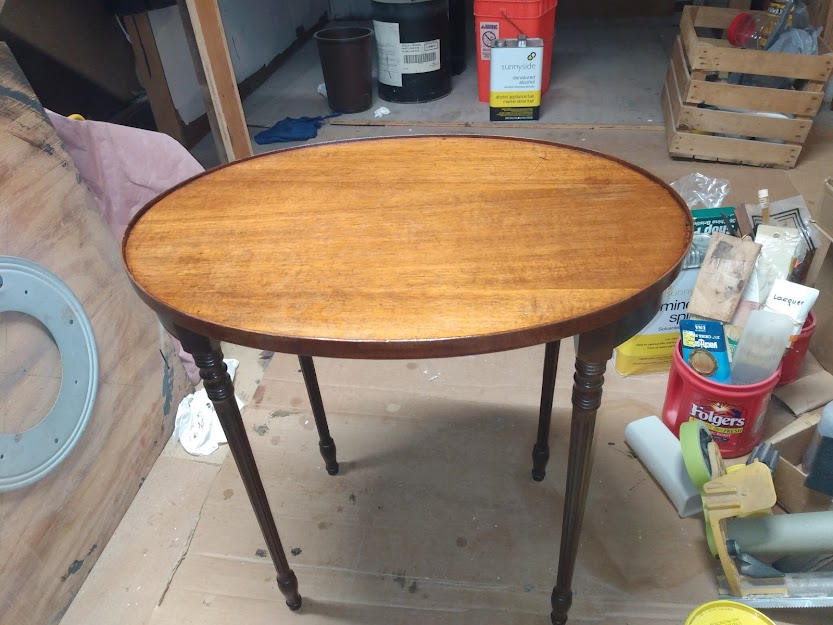

.thumb.jpg.573d1497d0675219908c85aabefd797a.jpg)


